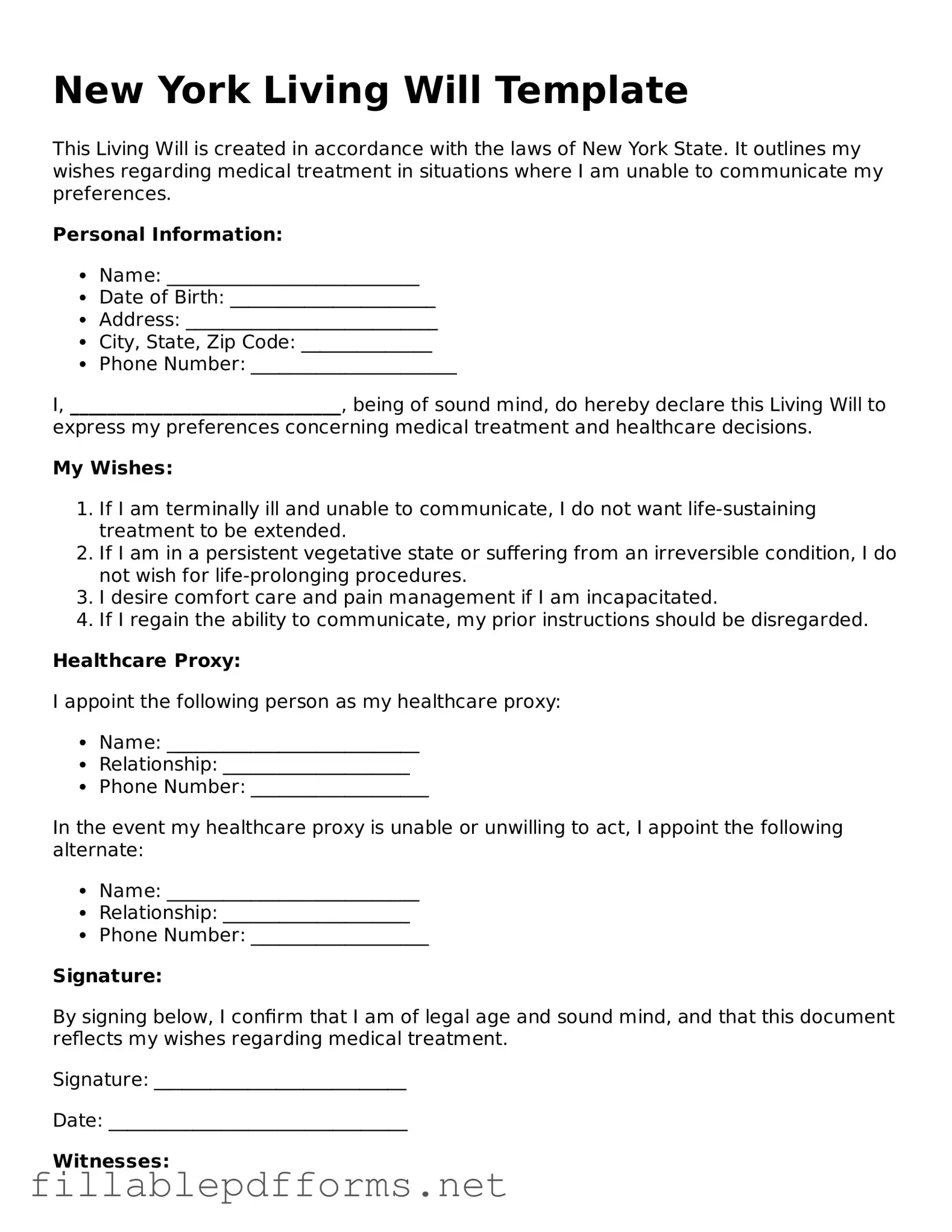Attorney-Verified Living Will Form for New York State
A New York Living Will form is a legal document that outlines an individual's preferences regarding medical treatment in the event they become unable to communicate their wishes. This form provides clear instructions about life-sustaining measures, ensuring that personal values and choices are respected during critical health situations. Understanding how to create and utilize this document is essential for anyone looking to safeguard their healthcare decisions.
Launch Editor Here
